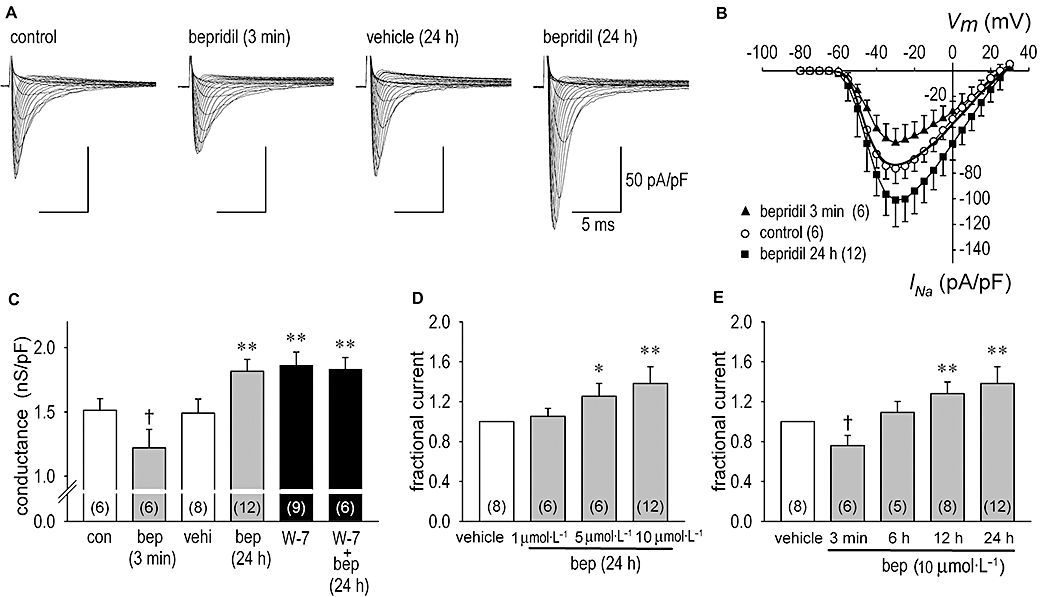Figure 2.

Short- and long-term effects of bepridil on Na+ channel current (INa) in human embryonic kidney (HEK)-Nav1.5 cells. (A) Representative INa families in the control condition, during the acute action of 10 µmol·L−1 bepridil given to the same patch shown in control condition in 3 min, in vehicle for 24 h and after the long-term action of 10 µmol·L−1 bepridil for 24 h. INa was elicited by a depolarization pulse of 35 ms duration, ranging from −80 to 30 mV in 5 mV steps, applied from the holding potential of −140 mV. (B) I–V relationships constructed by using group data in control, during the application of 10 µmol·L−1 bepridil in 3 min and after long-term treatment of 10 µmol·L−1 bepridil for 24 h. I–V relationship in the vehicle treatment for 24 h is shown in bold solid line without symbol for clarity. (C) The maximum chord conductance in the control condition (con), during acute (3 min) application of bepridil (bep), in vehicle (vehi) for 24 h, after treatment with 10 µmol·L−1 bepridil for 24 h, after treatment with 20 µmol·L−1 W-7 for 24 h and after treatment with W-7 (20 µmol·L−1) plus bepridil (10 µmol·L−1) for 24 h. (D) Dose-dependent long-term actions of bepridil on INa. HEK-Nav1.5 cells were incubated in vehicle, 1, 5 and 10 µmol·L−1 bepridil for 24 h. INa at each condition was obtained at the test potential of −30 mV and normalized to the value in vehicle. (E) Time-dependent actions of bepridil on INa. HEK-Nav1.5 cells were incubated (bathed) for 3 min, 6 h, 12 h and 24 h in the presence of 10 µmol·L−1 bepridil. INa was obtained by the same fashion as shown in panel (D). During INa recordings bepridil was excluded from the bath solution, except for the 3 min applications of bepridil. Numbers of experiments are shown in parentheses. †P < 0.05 compared with control, *P < 0.05 compared with vehicle, **P < 0.01 compared with vehicle.
